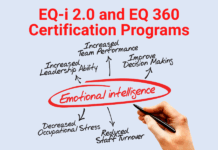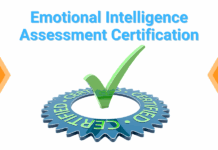
How can you maintain focus and avoid distractions in an open office environment?
This is a question I’m asked more and more frequently, as more of us are now working in an organization without cubicle walls, and sometimes without any office enclosures at all.
Often called “boiler rooms,” it used to be that only outbound sales people sat shoulder-to-shoulder in a large “pit.” But more recently—with Silicon Valley companies leading the way—all kinds of organizations embrace the “no walls” office environment with the stated goals of facilitating communication and teamwork. Of course, cynics would suggest that the real reason companies are moving to open offices is to save money on all those cubicles.
Regardless of the true reason for open offices, and whether or not they improve collaboration, it’s true that they also foster noise and interruptions that can negatively impact productivity.
So what can you do if you’re finding yourself distracted in an open office floorplan? Here are four ideas that you can use to manage the external environment, or to strengthen your internal ability to focus.
1. Turn Down The Noise
Noise-canceling headphones are probably your most effective weapon to combat noise in an open office environment. Good ones can cancel out approximately 90% background sound. The best can cost as much as $300 although others are closer to $100.
If you can’t afford noise-canceling headphones, simply using your own smartphone with headphones to play background music may also be effective. It’s best to choose tracks that don’t have words: sounds of rainfall, the ocean or even just “white noise” are effective.
2. Do Not Disturb
Conversations and sounds of course are not the only issues you may have in an open plan office. The other productivity killers in an open office are the endless interruptions from people asking if you’ve “got a minute.” These meetings rarely only take a minute, and even brief interruptions have a large impact on your ability to do deep work.
In many offices wearing headphones is a sign that you should not disturb a person. Others have taken to creating an actual “Do Not Disturb” sign—or stealing one from a hotel room—and displaying it on their desk or back of their office chair. Alternatively, Amazon sells “Do Not Disturb” yellow tape that stretches across your cubicle. Your colleagues may laugh at first but when they see your productivity, they will steal your idea for themselves.
3. Take More Breaks
In addition to controlling your external environment, you can increase your ability to focus by re-wiring yourself internally. It sounds counter intuitive, but to avoid distractions, take more breaks. It can be daunting and frustrating to try to stay focused all morning, or all afternoon. Instead, you want to master shorter work sprints.
The Pomodoro technique alternates between productive time and breaks. You monotask for a certain period with total focus and then you have a short break to grab more water or a cup of coffee, have a conversation or anything else. The official Pomodoro System calls for 25-minute work sprints and 5-minute breaks, but there are many people—myself included—who spend 50 minutes working and 10 minutes on break. Choose what suits you best, but focus on one task and don’t engage in any interruptions unless you’re on your break time.
To help you stay disciplined during your work sprints, use some kind of timer that can easily show you how much time remains until your break. Some people just use the alarm on their smartphone, and there are various Pomodoro apps and websites that you can use too. If you’re serious about this method, I encourage you to get a “Time Timer” which is a special clock designed for schoolteachers. You set the amount of time you desire for your working session and a red dial spins down minute-by-minute as an excellent visual reminder. Google uses these clocks in many of their meeting rooms and for their design sessions to keep everyone on track.
Science says, thanks to social media our attention span has shrunk from 12 seconds in 2000 to 8 seconds today. Meanwhile, the attention span of a goldfish is 9 seconds. But unlike the goldfish, we don’t have walls to keep out the noise. In order to achieve your goals in an environment that doesn’t favor deeply focused work, you need to take matters to your own hands and control both your external and internal environment.
—
Kevin Kruse is the author of 15 Secrets Successful People Know About Time Management and How Millionaires Plan Their Day: A 1-Page Tool.
Photo: Pixabay/sigre





